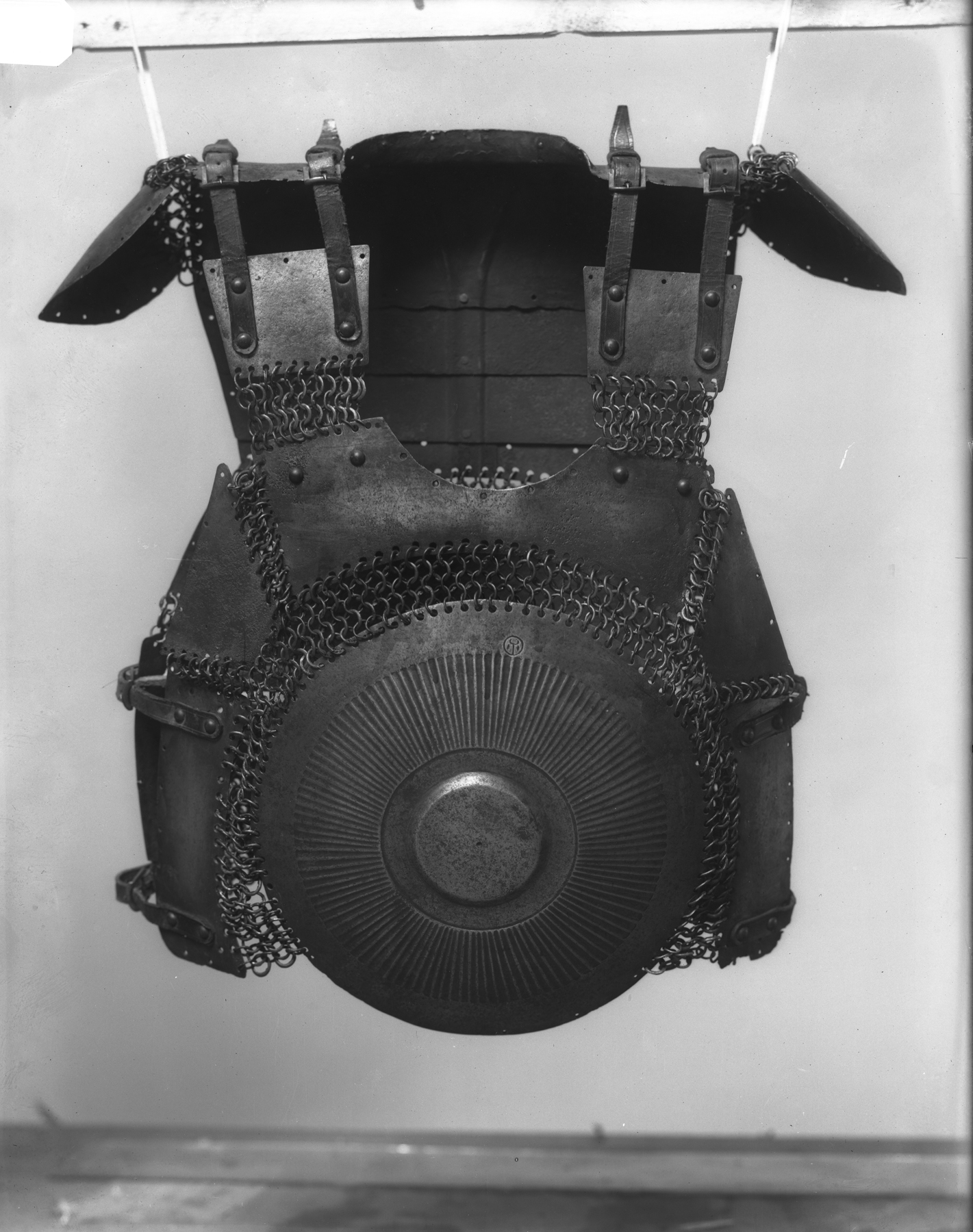Cuirass (Breastplate and Backplate)
The Turkish arms and armor collected during the 1500s and 1600s in Habsburg circles were either trophies of a feared enemy or diplomatic gifts. They reflected efforts to repel the invasions of Europe by successive sultans of the Ottoman dynasty, who, as caliphs-successors of the prophet Muhammad as leaders of Islam-considered themselves obliged to wage holy wars against non-Muslims. The Ottoman Empire, with its capital at Constantinople (present-day Istanbul, Turkey), reached its height as a world power during the reign of Suleiman I the Magnificent (r. 1520-66) whose European incursions reached as far as Vienna. The Habsburgs led the defense of Christian Europe: the Spanish branch, at sea and in North Africa, and the Austrian branch, on land, with a decisive victory in 1683 at Vienna.
Provenance
Provenance (from the French provenir, 'to come from/forth') is the chronology of the ownership, custody, or location of a historical object. Learn more about provenance at the Walters.
S. Irene, Arsenal of Constantinople (?); Dikran Kelekian, New York and Paris [date and mode of acquisition unknown]; Henry Walters, Baltimore, 1911 [mode of acquisition unknown]; Walters Art Museum, 1931, by bequest.
Geographies
Turkey, Anatolia (Ottoman Turkey) (Place of Origin)
Measurements
H: 12 5/16 in. (31.2 cm)
Credit Line
Acquired by Henry Walters, 1911
Location in Museum
Accession Number
In libraries, galleries, museums, and archives, an accession number is a unique identifier assigned to each object in the collection.
In libraries, galleries, museums, and archives, an accession number is a unique identifier assigned to each object in the collection.
51.420


